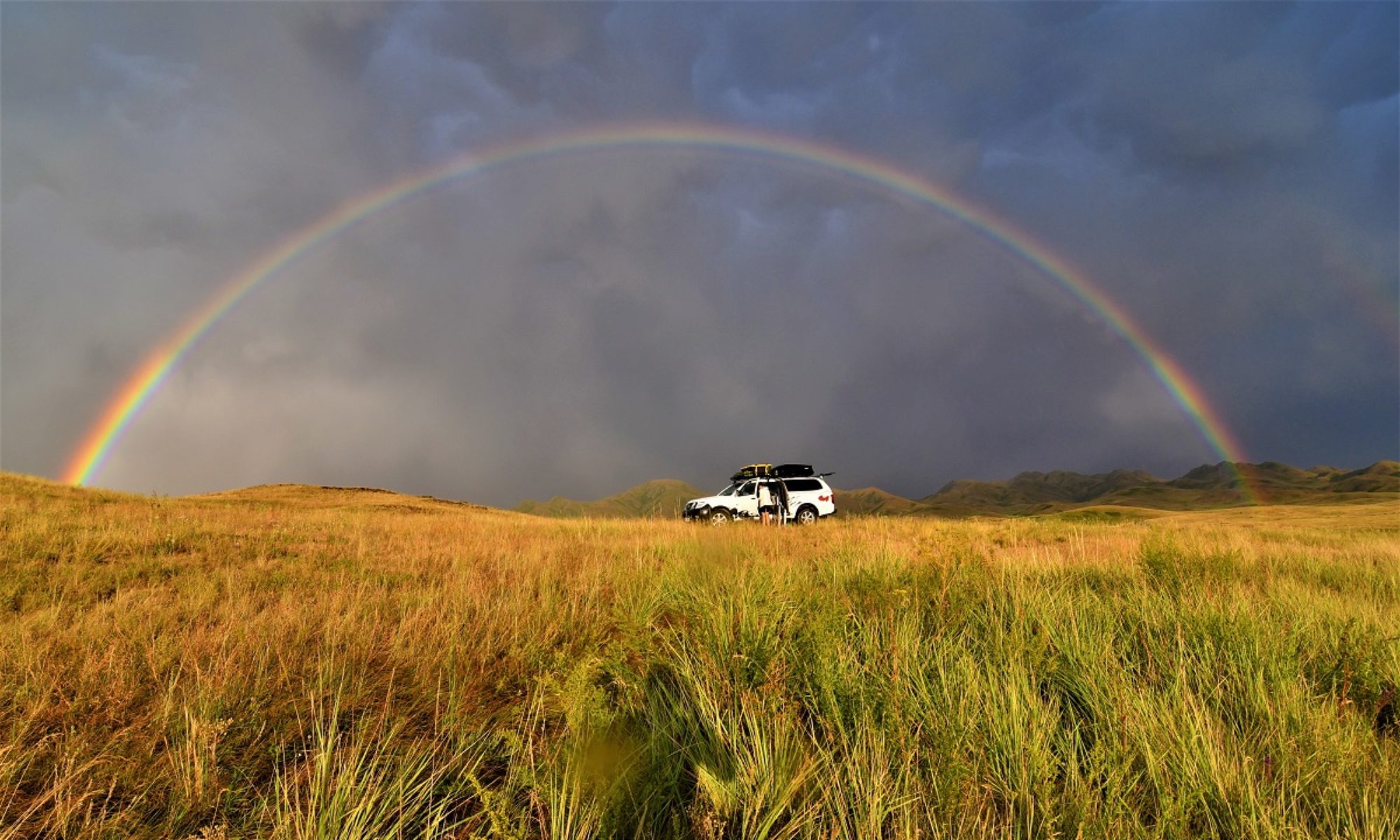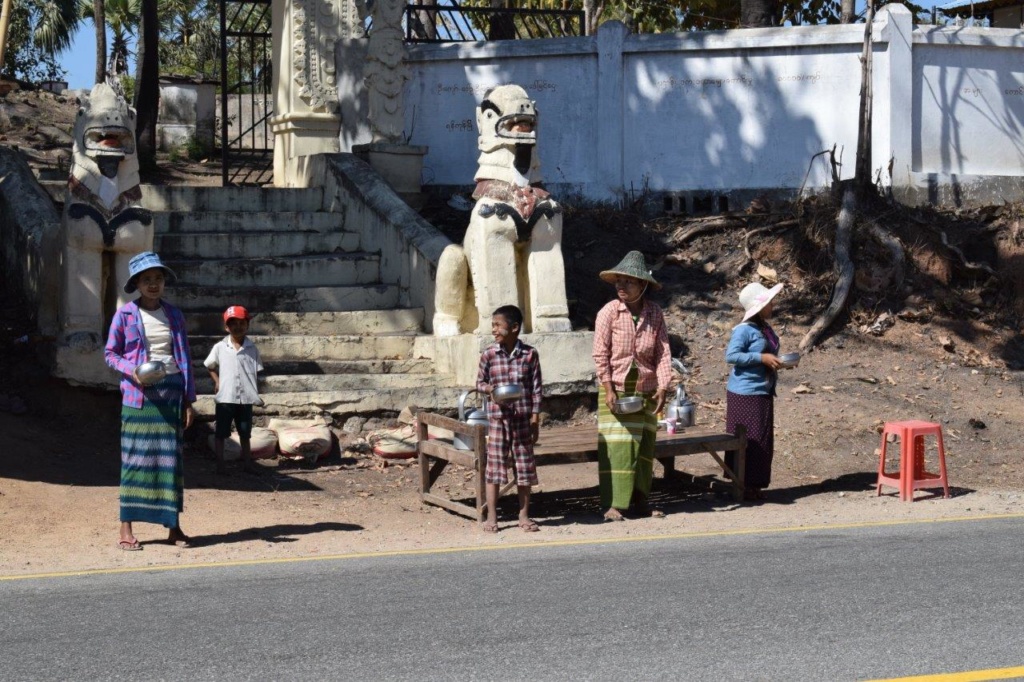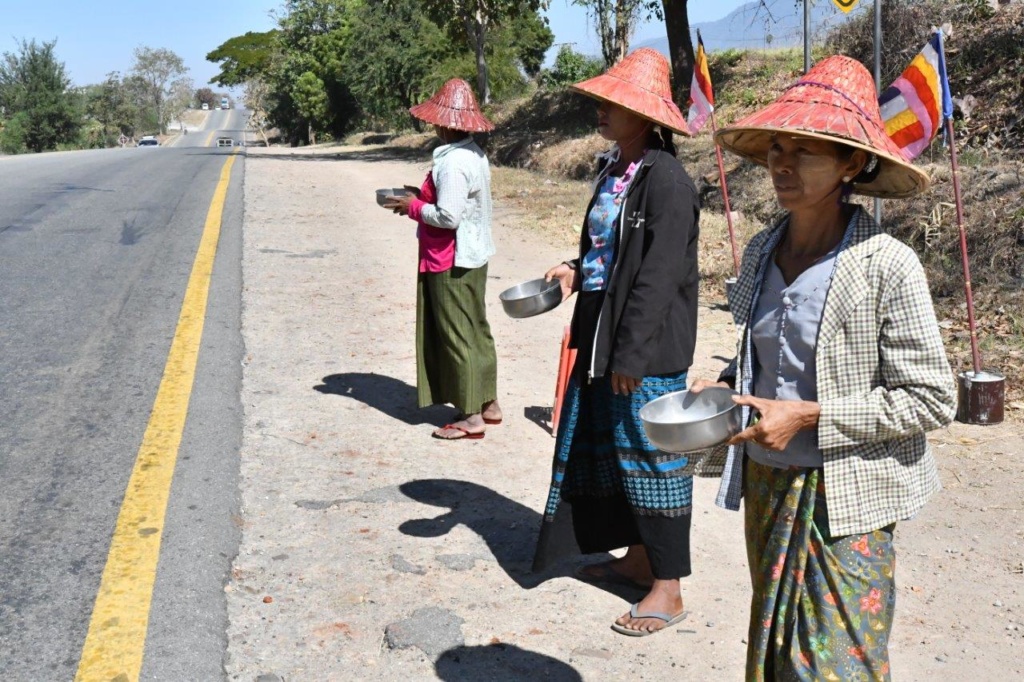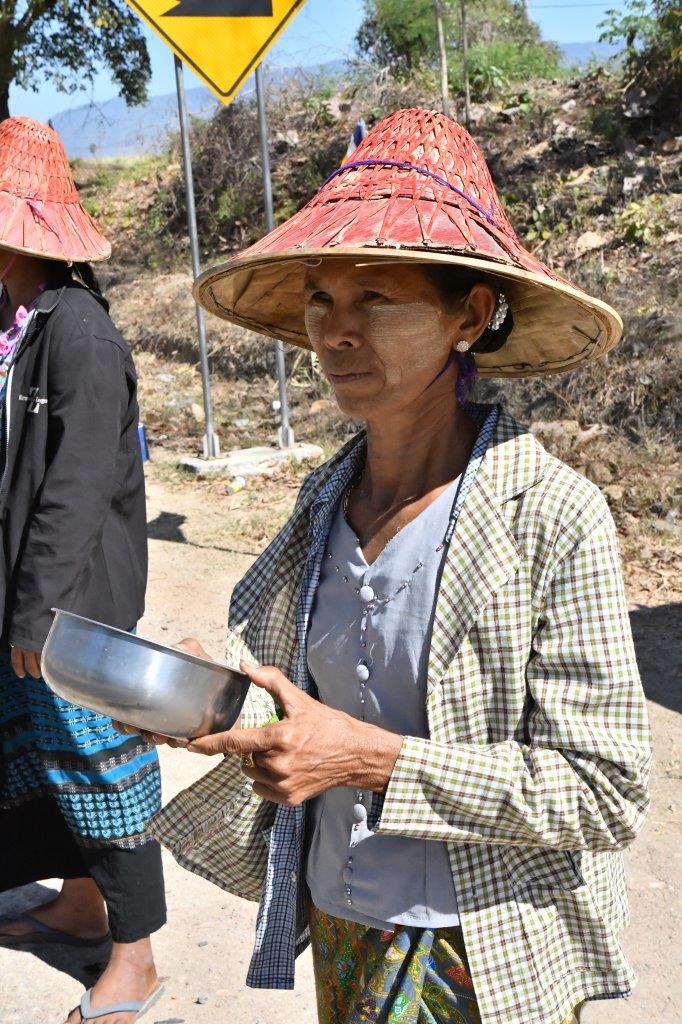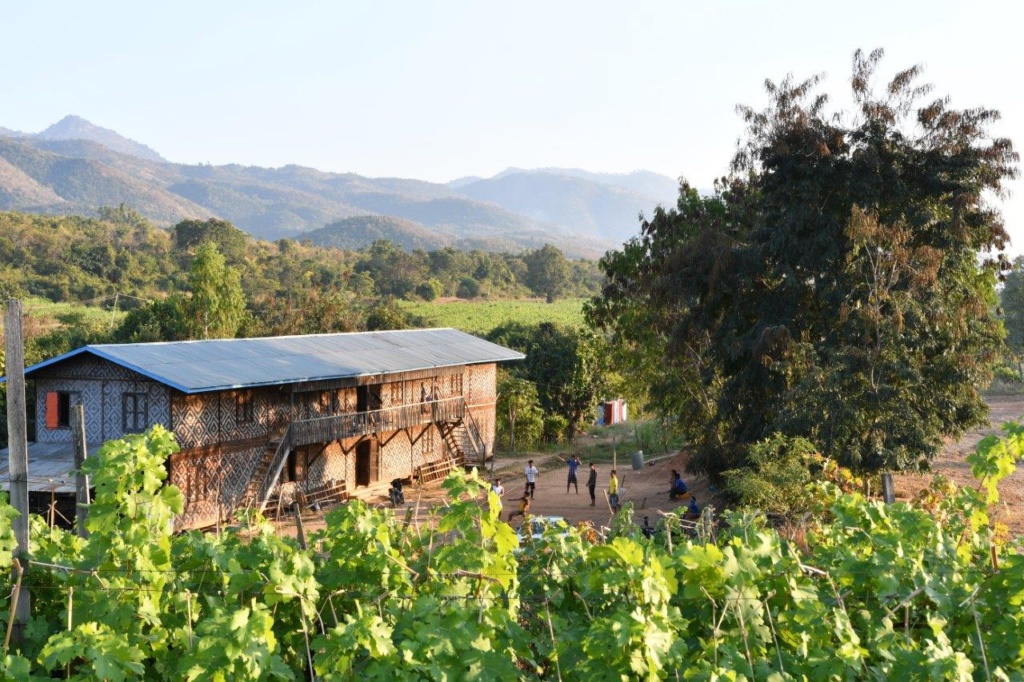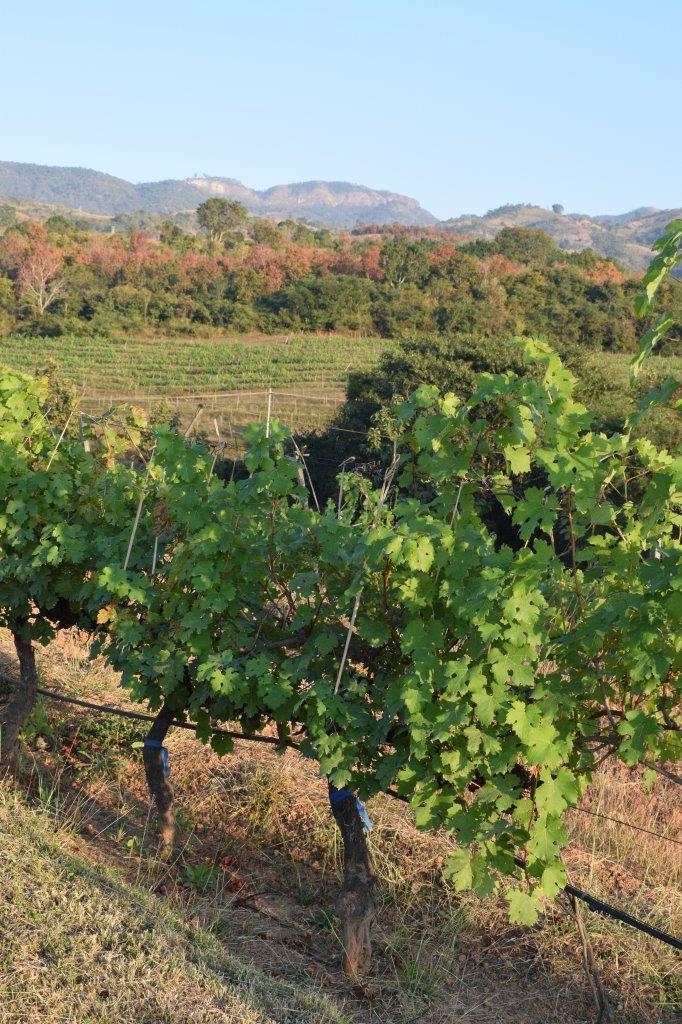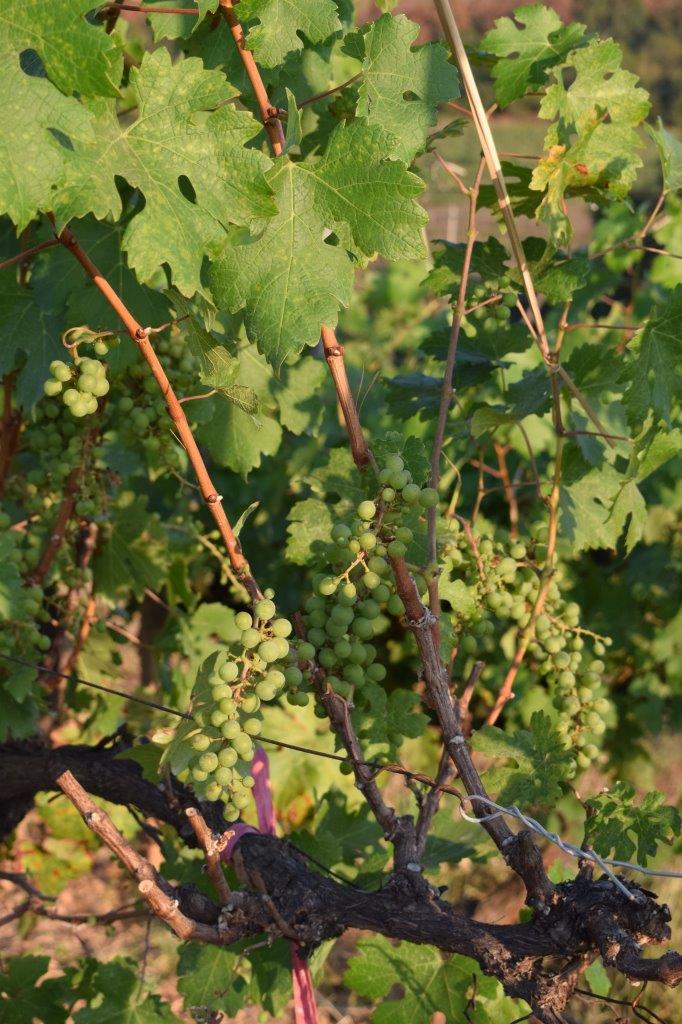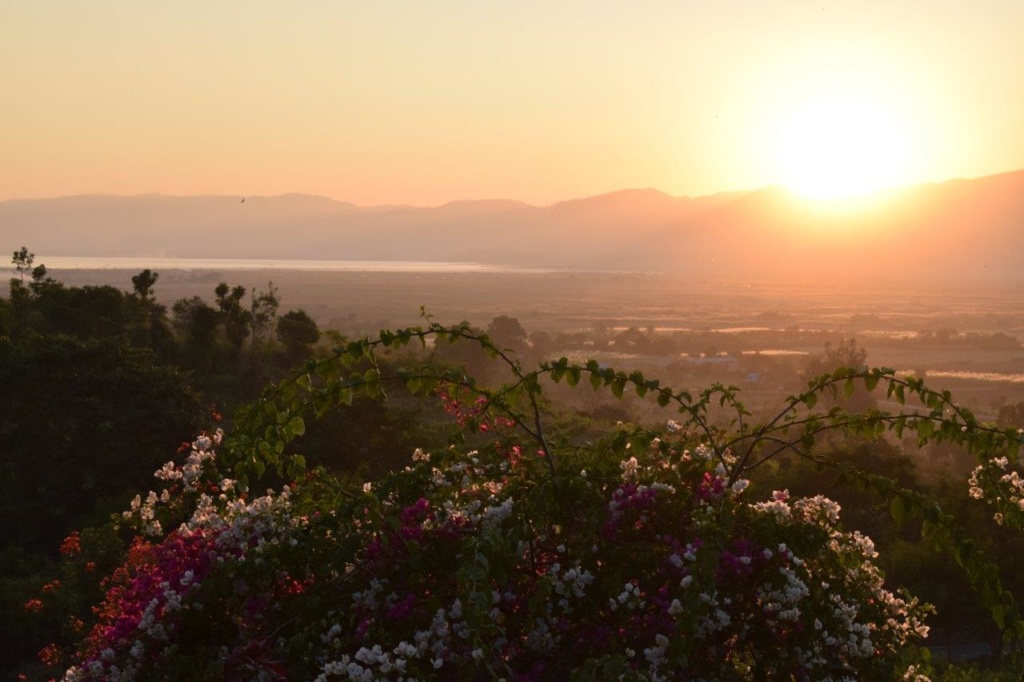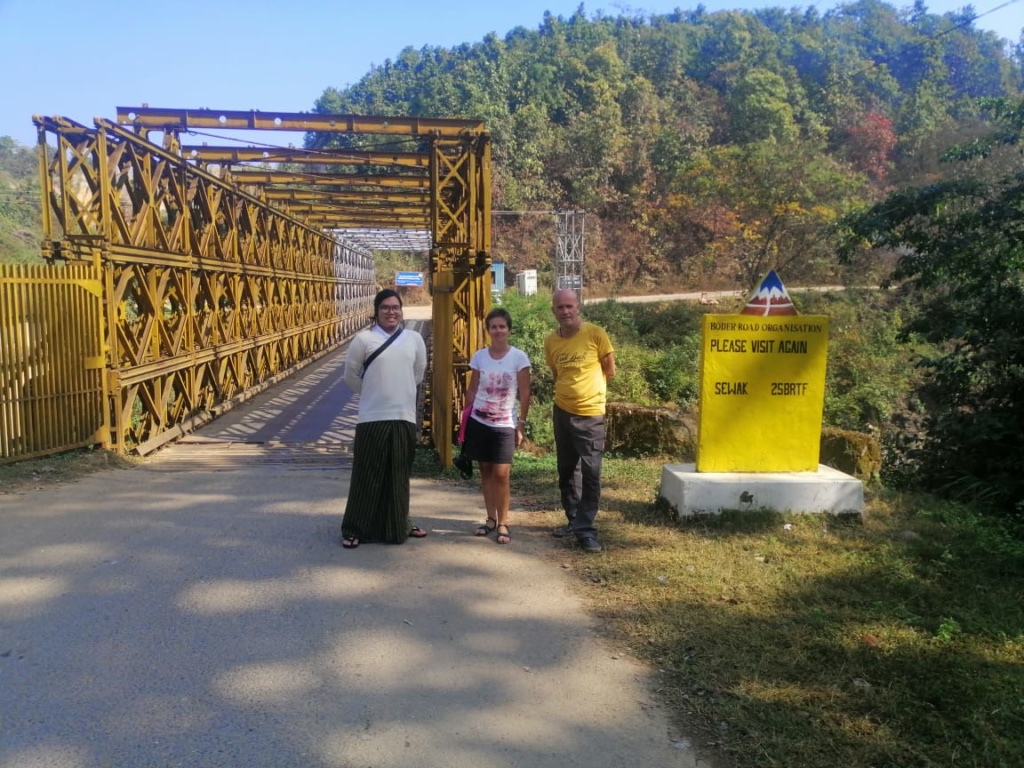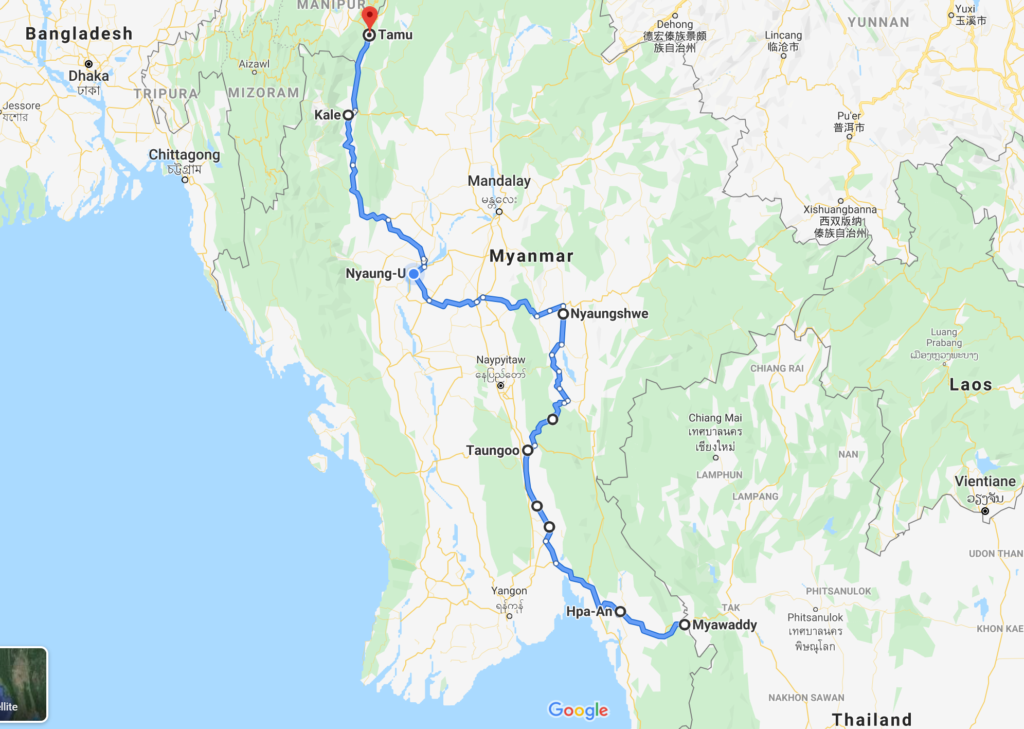
Sunday 12th January, 2020 – Hpa-An
Border crossing at Mae Sot/ Myawaddy was quite chaotic with only one lane each way and cars going from one lane to the other regardless of oncoming traffic. The fact that the driving side changes halfway through crossing the bridge acting as the border does not help! ( you drive on the left in Thailand but on the right in Myanmar).

You have to book a guided tour to travel with a vehicle in Myanmar and our guide met us on the burmese side of the border. He had all the necessary authorisations required, temporary license plate etc and gave us a letter in burmese to show at check-points as and when necessary. Thankfully the guide is in a separate car and after confirming the route for the day we were free to go on our own.
It was not long before we had the first police check-point. They took copies of our passport, had a look at the authorisation letter and sent us on our way…
The destination for today was Hpa-An, a four hour drive. We took a small road going through the mountains . It was asphalted (mostly) and in far better condition than the main road we eventually rejoined. The views to the mountains was blocked by a haze which appeared to be the result of fires lit up by the locals, either to burn rubbish or scrub.
Sunday 13th January, 2020 – Taungoo
Busy road with trucks driving in the fast lane to avoid having to constantly overtake people on bikes or tuk-tuks so cars end up overtaking on the inside lane… sometimes a bit hairy when you have a massive lorry on the “wrong side”! Scenery nothing special. We got stopped at a few checkpoints, there were some tolls but in some places they let us go without paying when they saw we were foreigners.
We passed a lot of places where a few people were standing by the side of the road, just outside a temple or some religious building, shaking a metal bowl with some stones in it to incite donations from drivers. That money is for the construction/ repairs of the temple or roads of the local village. ( the metal bowl is the one normally used by monks to receive their daily alms from people and they use stones as there are no coins in the burmese currency). There is normally some loud music playing to attract attention too.
The lady in the picture above has some thanaka applied to her face ( more on this below).
As we were arriving in Taungoo, a sizeable crowd was watching a match of foot volleyball by the side of the road.( this is called chin lone in Myanmar but is also played in Laos and some other south- east asian countries). You can use any part of your body except your hands/ arms to kick the rattan ball, there are 3 players on each side. The teams were good and we saw some great moves. At times, the players spring in the air to kick the ball with their foot and are almost upside down in the process, real acrobatics, fast and furious and fun to watch!
There was a funfair in Taungoo ( or at least there had been one and only a few attractions remained). We wandered round and were puzzled by a few stalls selling just wood ( in all sizes ). One of the seller showed us a round flat grinding stone and demonstrated how to get the famous cosmetic paste used by most women in Myanmar, called thanaka (but we have seen young children even babies with thanaka on their faces and some young men also wear it). You just add a bit of water on the stone and then rub the bark of the wood block on it until you get a yellowish watery paste that you can apply. Thanaka has a cooling effect, protects from the sun and is said to be good against acne. This is the natural beauty secret of burmese women!
The field where the fair had been was litered with rubbish but it did not stop two enthusiasts to play golf!

Rubbish and makeshift housing 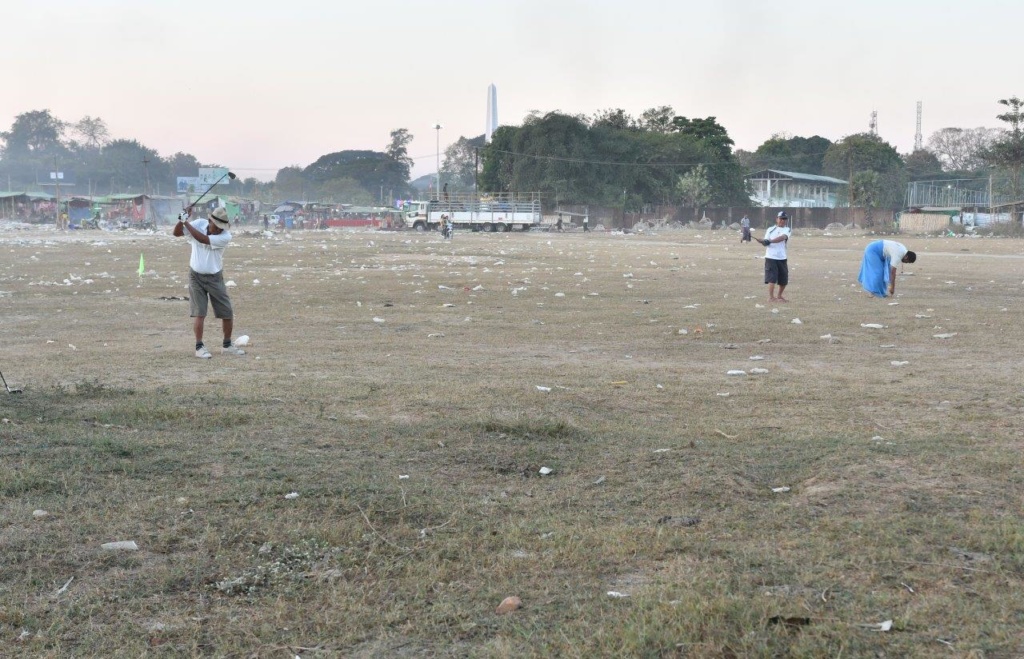
Two men having a game of golf! 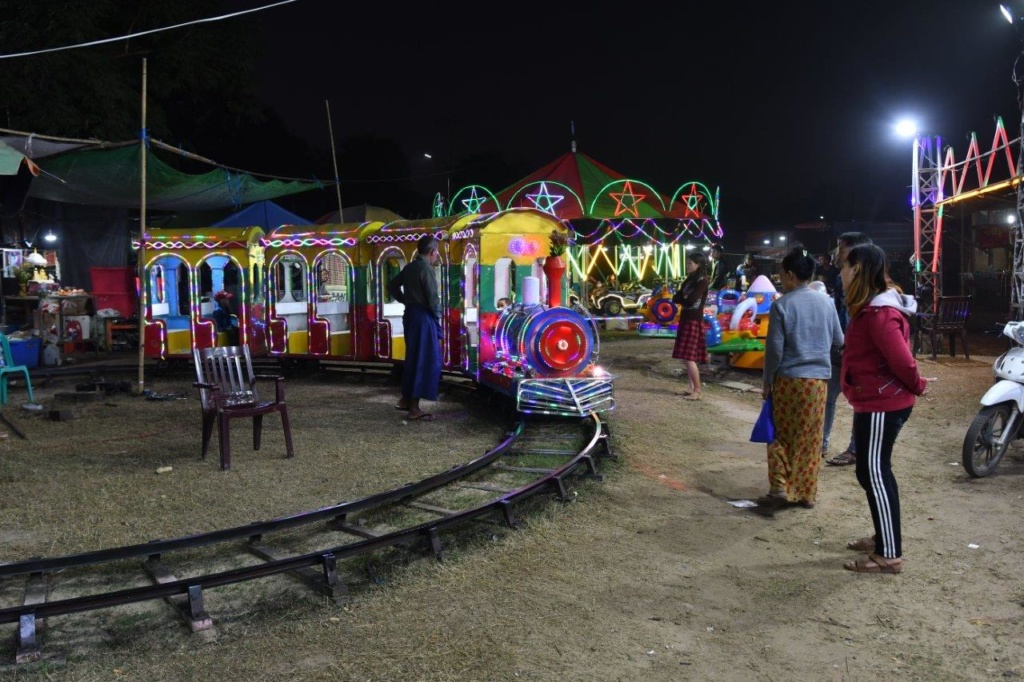
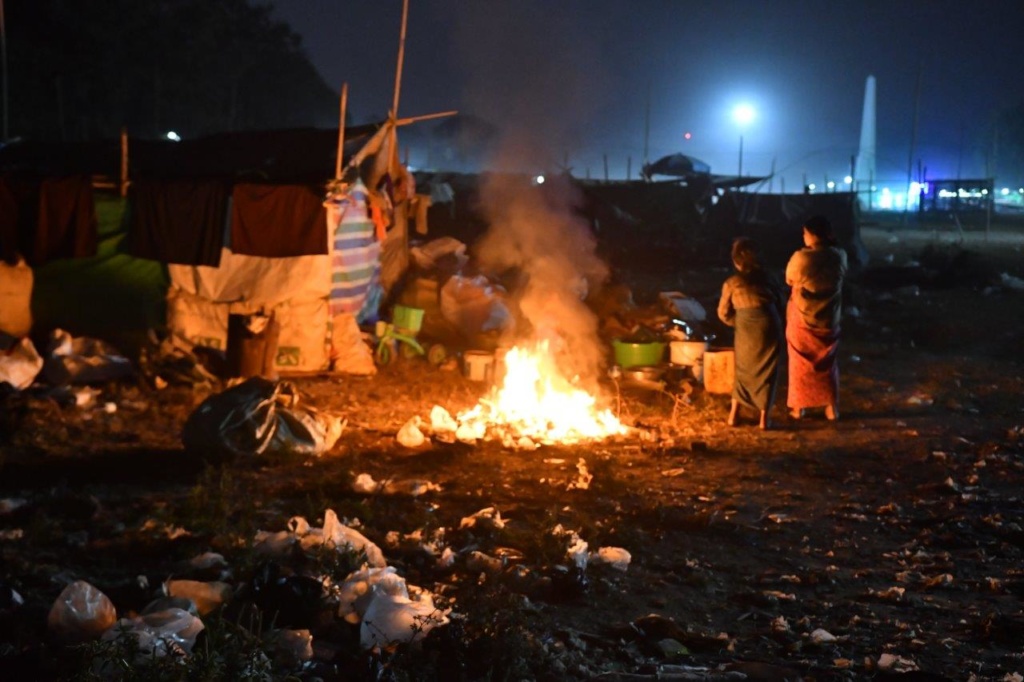
Tuesday 14th January, 2020 – Nyaung Shwe ( Inle Lake)
Today we drove on a minor road going through agricultural land initially, then mountains: nice scenery and the mountains were clear ! We saw people working in the fields, using handheld plough pulled by oxen or transporting hay in large wooden ox carts.
re last picture above, we saw a lot of dragon fruits for sale in markets inThailand but must be out of season here. This is what the fruit looks like:
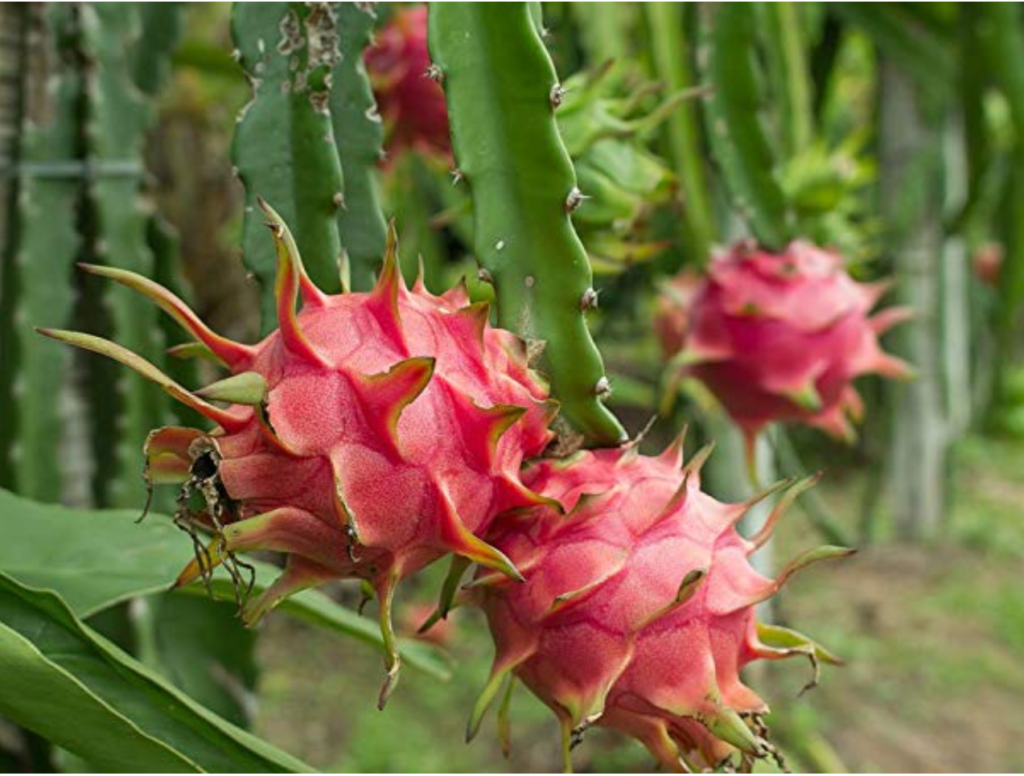
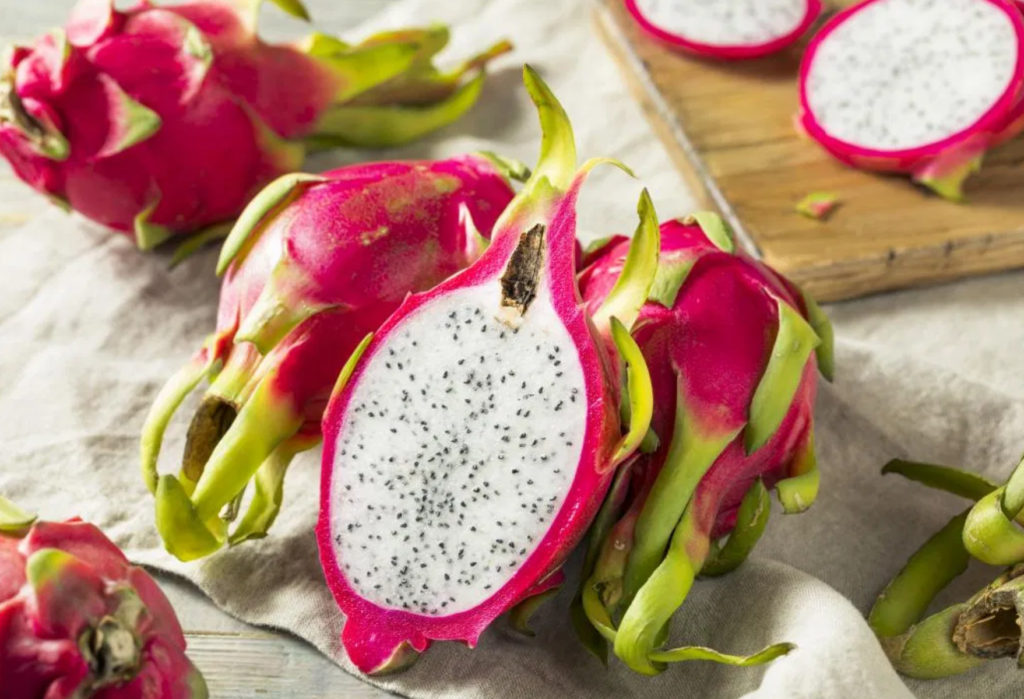
On the way we also stopped at a local school fete where kids, dressed up, were dancing on stage watched by parents and family. We were ushered to the front row when people saw us taking pictures and given seats of honour.
Wednesday 15th January, 2020 – Inle Lake
We spent the day on the lake, taking one of the long boats to go to the Shwe Inn Dein Pagodas one hour away at the southern end of the lake. Inle lake is famous for its fishermen using their leg to hold the oar and row. Only a few fishermen still use this traditional way for fishing but some are conveniently posted on the lake for tourists…
On the way we saw real fishermen too, people going about their daily business, washing themselves, washing clothes in the lake or working in the floating gardens. These gardens are made of water hyacinth tubers heaped with sediment to form small floating islands, secured to the bottom of the lake by bamboo poles. (the lake is quite shallow with a maximum depth of 3.7m in dry season). The main crop is tomatoes, reputed to be tasty, but aubergines, squash and runner beans are also grown as well as flowers.
Shwe Inn Dein Pagodas
The site is believed to date back to the days of the Indian emperor Ashoka, who sent out monks in the 3rd century BC across Asia to spread Buddhism. Centuries later two Kings of the Bagan empire, Narapatisithu and Anawrahta built pagodas at the site. The site contains hundreds of pagodas in various states of repair; some are well preserved, while others have plants and trees growing out of them. They are collectively known as the Shwe Inn Thein pagodas. Most are from the 17th and 18th century; the earliest one with an inscription dates to the 14th century,
We also visited various workshops displaying local craftsmanship, in particular lotus and silk weaving, lacqueware and cheroot making (cigars).
Lotus weaving:
Lotus plants grow naturally on the lake and lotus weaving at Inle Lake dates back a hundred years when a local artisan noticed that when she cut the lotus stem and pulled the halves gently, a thread appeared.
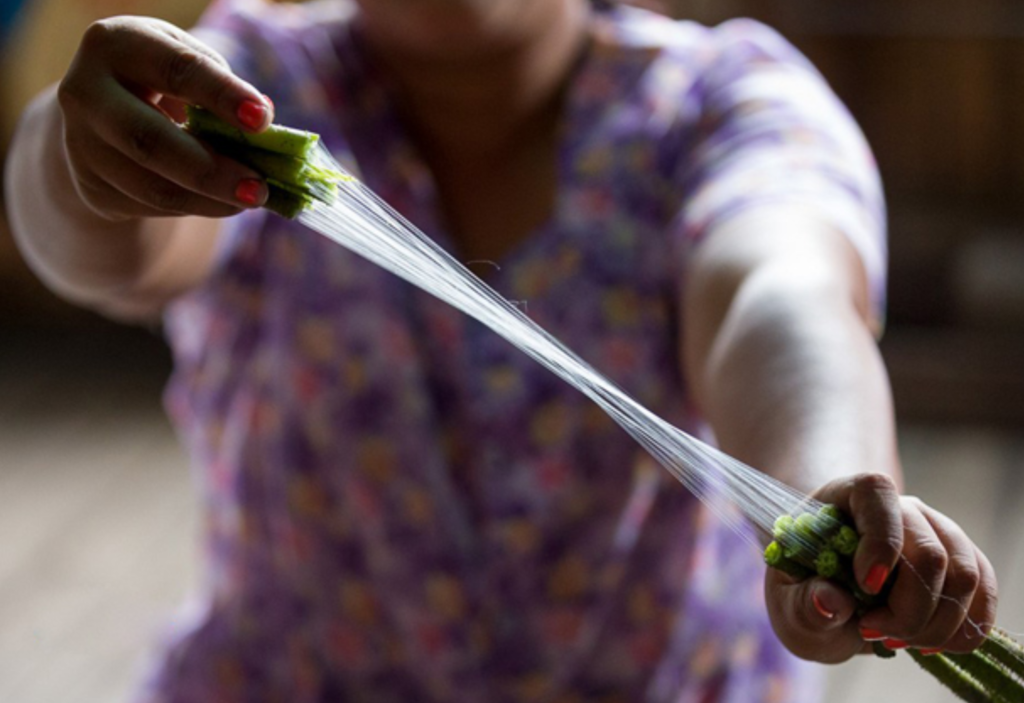
The stems are cut by hand and the very thin threads are spread on a wooden board then rolled together, immersed in water then spun into spools and handlooms are used to weave the fabric. It takes at least 20,000 lotus stems and 40 days to produce a square meter of lotus fabric! The original lotus thread has a creamy color, natural dyes such as tree barks, seeds, jackfruit, and lotus leaves are used to produce various colours. The fabric has been traditionally used for monk robes as the lotus symbolizes purity in Buddhism but it is also used for scarves, shawls and the longyis ( traditional Burmese dress). Lotus thread and silk are sometimes woven together to create intricate designs. Lotus fabric is soft and becomes even softer after a few washes.
In the evening we went to a winery, where you can do wine tasting and watch the sunset. ( who could have known that Myanmar was producing some wine !)
Thursday 16th January, 2020 – BAGAN
The road to Bagan was mostly good apart from sections where the roads was being enlarged. There was some machinery used but more often than not it was women doing the work, carrying baskets of stones on their head, with no protective clothing and wearing flip-flops! The stones were laid and spread manually. We even saw workers( men) using pick axes and hammers (women) to break larger stones into smaller pieces. Hard work !

Women road workers 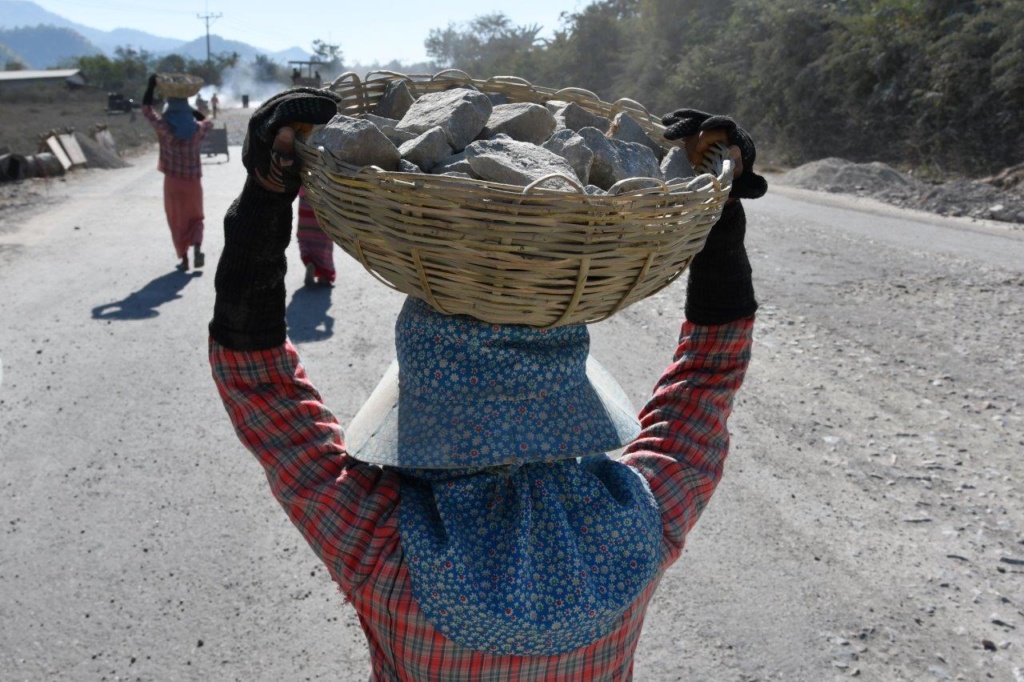
The basket weights no less than 10kg 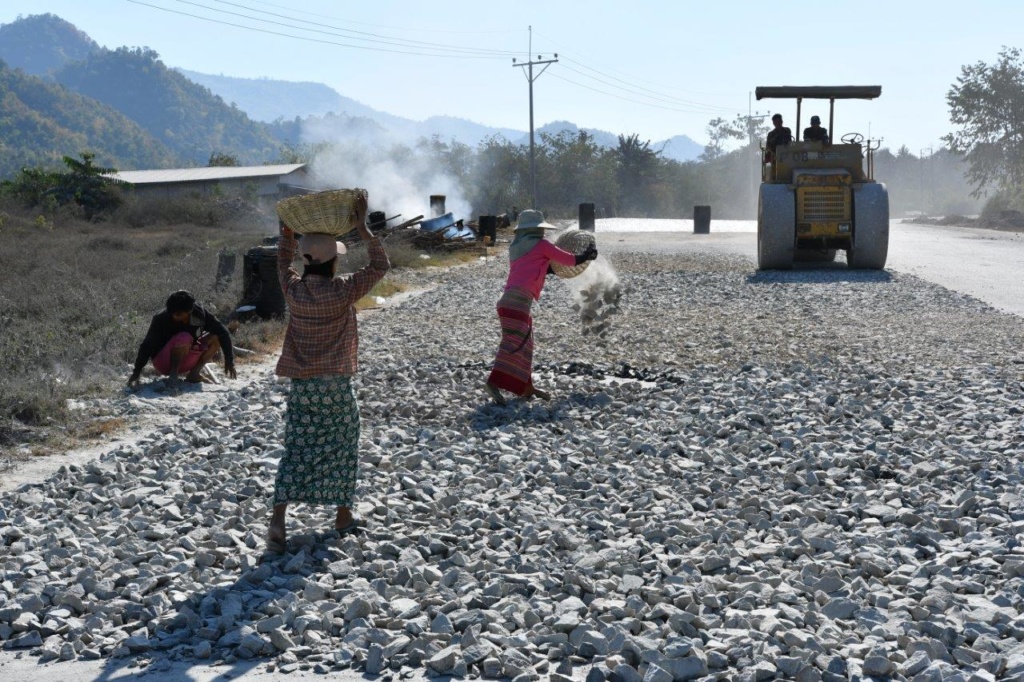
Laying the foundations of the road, basket by basket!
We stopped at a market to buy a few fruit and vegetables for lunch. People are not used to see tourists so we were stared at, but in a good way, out of curiosity. For lunch we took a small dirt road leading to a village and were about to stopped outside a derelict barn when the neighbour across the road invited us to come and park in his front yard. They cleared a table for us to sit at outside and were also very curious about where we were from, where we had been… and looked eagerly as I was preparing lunch : tuna, tomato and avocado salad ! After a while the ladies went back to their work. Could not quite understand what they were doing but they appeared to knit or pleat together strands of hair (horse mane or human??)
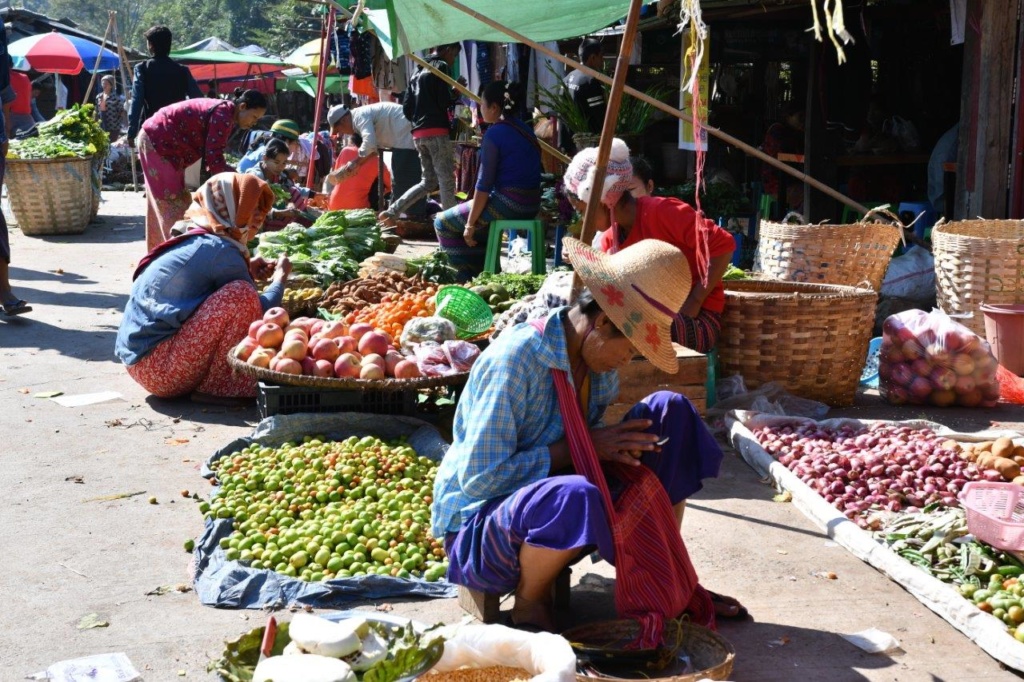
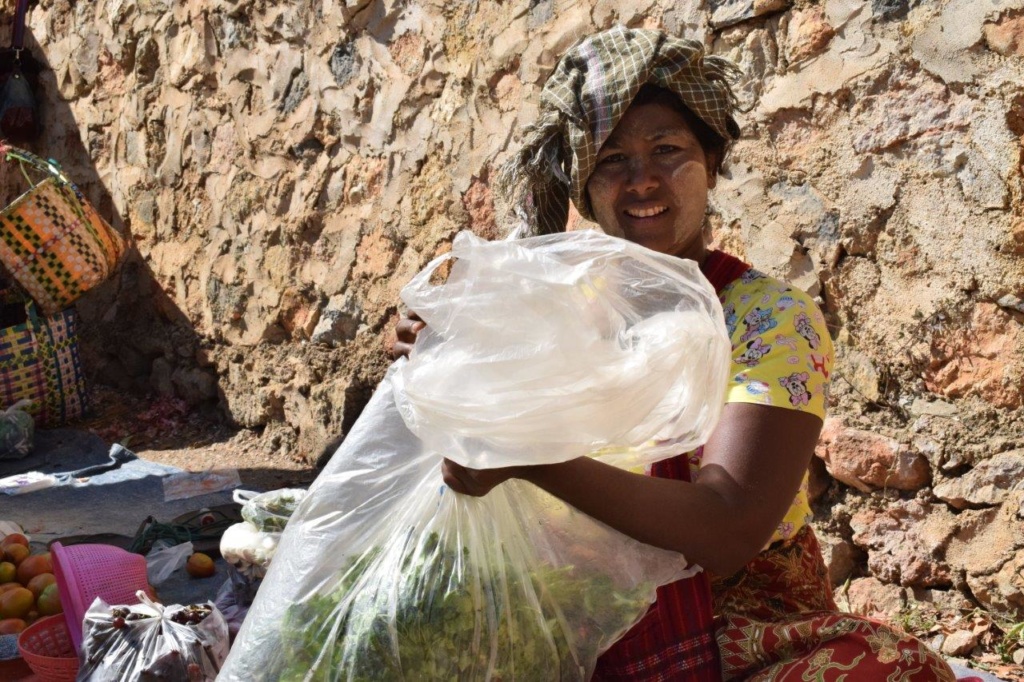
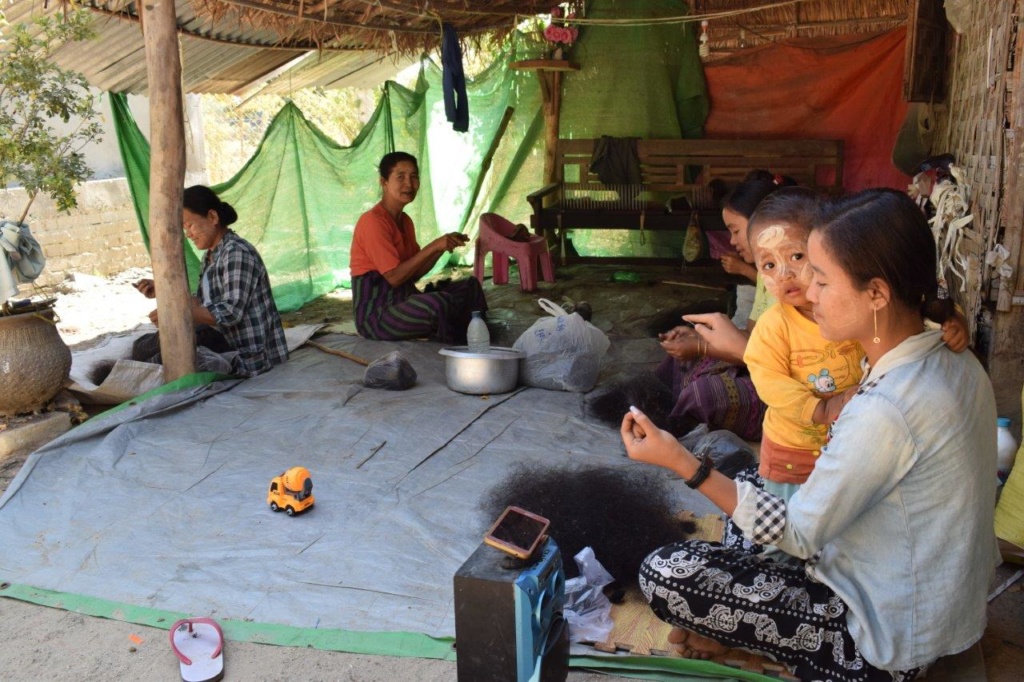
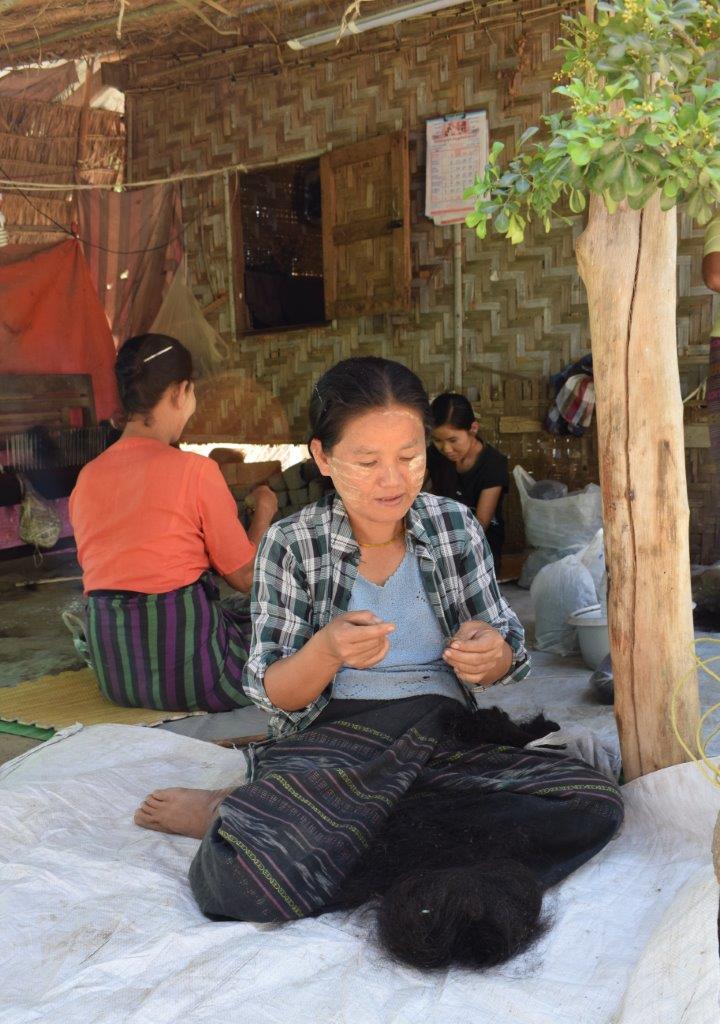
Human hair ?
Friday 17th January, 2020 – BAGAN
Spent the morning with our guide exploring some of the major temples.
Bagan is an ancient city that was the capital of the prosperous Bagan empire that controlled most of present day Myanmar (Burma). At the height of empire’s power between the 11th and 13th century more than 10,000 temples and pagodas were built.
Today, about 2,200 monuments remain in various states of repair, which makes Bagan one of the most dense concentrations of temples and pagodas in the world. massive temple construction began during the reign of King Anawrahta, who founded the Bagan empire in 1044. The King who was converted to Theravada Buddhism started building some of the grandest temples of Bagan, like the Shwezigon Pagoda as an act of making merit. Gradually Bagan became a center for Buddhism attracting monks from far away countries.
The Shwezigon Pagoda, completed in 1090, is one of the oldest and most impressive monuments of Bagan. Most noticeable is the huge gold plated pagoda glimmering in the sun. The design of the Shwezigon Pagoda has been copied many times across Burma over the centuries.
The Ananda Pagoda is an elegant, symmetrical structure with the layout of a Greek cross. One of the most noticeable and beautiful features is the gilded top called sikhara, that is placed on the center of the building. This tower like structure originates from North India and shows Indian influence in the architectural style of the Ananda.
In the center of the Ananda Pagoda is a large square room where four magnificent standing Buddha images are placed in arched recesses. The teak wooden 9½ meters tall gilded images represent the four previous Buddhas that have reached nirvana, namely Kassapa Buddha (South), Kakusandha Buddha (North), Konagamana Buddha (East) and Gautama Buddha (West).
The Kakusandha Buddha image and the Kassapa Buddha image date back the the early 12th century when the Ananda was built but he Konagamana image and the Gautama image are in the Mandalay style and were likely made in the 17th century after the originals were destroyed by a fire.
In the afternoon, we went out again, this time in our car, and took some roads at random, leading to other less famous temples but just as beautiful. We then headed to a view point for sunset, we were a bit too far to get a good view.
Saturday 18th January, 2020 – Kale
Today we are making our way north-west towards the border with India. The road was quite twisty initially and rural. Saw plenty of ox carts, most still on wooden wheels.
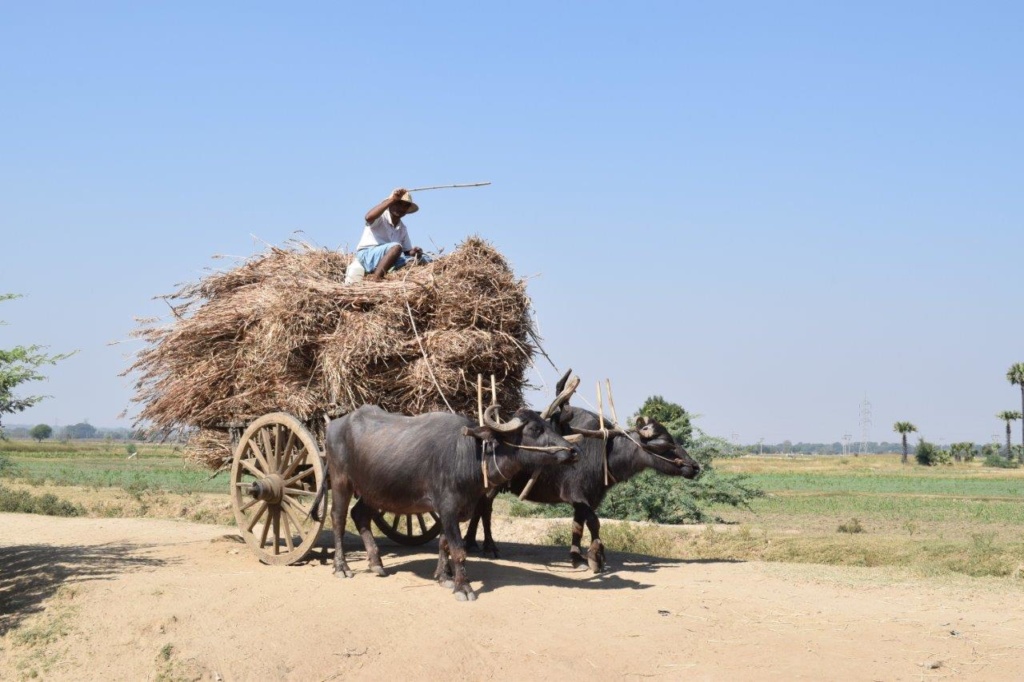
Rural Myanmar
Sunday 19th January, 2020 – Tamu – Indian border
The road to the border was not so good with lots of small iron bridges. Today is Sunday and we saw more people on the streets. We also saw quite a number of christian churches and people going to mass, which was surprising.
The border post at Tamu is quite small and was quiet so things went smoothly.
We said goodbye to Min, our guide and crossed over to the Indian side ( Moreh)
